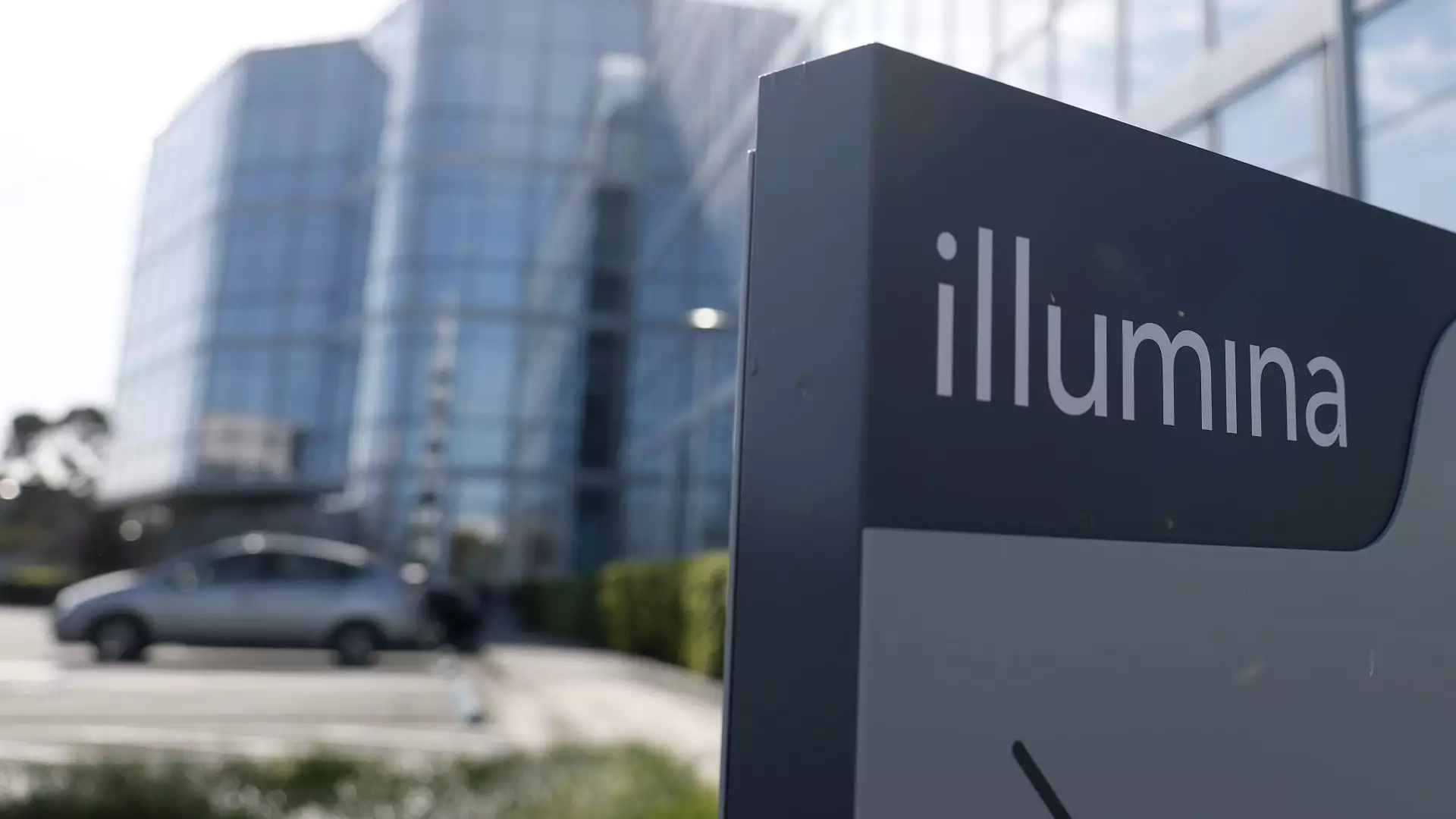Once heralded as a pioneer in the realm of genomic solutions, Illumina now finds itself languishing under a weight of declining stock prices and lost market confidence. With a stock value plummeting from a dizzying $511 per share to a meager $80, the narrative surrounding this biotech giant has shifted dramatically in recent years. The company dominated the sequencing landscape, boasting an impressive 80% market share. Yet, the past twelve months have painted a different picture—one marred by missteps, regulatory woes, and a desperate need for reinvention. This decline is not merely coincidental; it reflects deeper systemic issues in a rapidly evolving sector, where innovation must be paired with strategic foresight.
Illumina’s Misguided Acquisition Strategies
At the heart of Illumina’s struggles lies a series of ill-fated decisions, particularly the turbulent journey involving its Grail business. Founded in 2015 and spun out the following year, Grail aimed to transform early cancer detection through its groundbreaking liquid biopsy technology. However, Illumina’s attempt to reacquire Grail for $8 billion in 2020 sparked a regulatory firestorm. The European Commission’s subsequent intervention and hefty fines not only soured relations but showcased the pitfalls of aggressive expansion without adequate regulatory foresight. This saga highlights a fundamental flaw in Illumina’s approach: an overzealous commitment to growth without a robust understanding of the geopolitical and regulatory landscapes that could impede progress.
The Pandemic Effect: A Double-Edged Sword
The COVID-19 pandemic was a double-edged sword for Illumina. Initially, it led to an explosive demand for sequencing machines, with revenues surging by approximately 40% from 2020 to 2021. However, as the pandemic subsided, this surge gave way to a sudden drop in demand, revealing the inherent volatility within the biotech market. Illumina’s dependency on the pandemic-laden boom quickly became its Achilles’ heel, as post-pandemic realities settled in and the urgent need for testing diminished. The inability to pivot beyond immediate needs showcased a startling lack of vision—a critical shortcoming for a company that once positioned itself as an innovator.
Geopolitical Challenges and Market Limitations
Illumina’s challenges extend beyond corporate strategy and into the realm of international affairs. The ongoing geopolitical tensions in Russia and China have drastically impeded its operations in these regions. The unpredictability of these markets has raised flags about its sustainable growth prospects. Companies operating in biotech must navigate a complex tapestry of global politics, and Illumina’s struggle to maintain its footing amid these challenges demonstrates not only the risks of overreliance on specific markets but also the necessity for robust diversification strategies. The borders of the biotech space are increasingly defined by global political lines, and for firms like Illumina, the stakes have never been higher.
A Leadership Restructuring Made Too Late
With the appointment of new board members, including Keith Meister of Corvex Management, some advocates might see a glimmer of hope. However, the question remains—will this restructuring bring about the meaningful changes needed to invigorate the company? Meister’s reputation as a valuable contributor to other biotech boards is noteworthy, yet it may not be enough to restore Illumina’s former glory. A leadership overhaul should not merely serve as a reaction to past failures; it should instigate a culture of innovation and adaptability. Without this cultural shift, Illumina risks becoming a mere relic of its former self, an example of how failing to evolve could have catastrophic implications.
The Urgency for Technological Innovation
As Illumina stands poised to transition to its next-generation sequencing technology—the NovaSeq X—it faces a critical juncture where innovation must meet execution. This technological leap is not just essential for the company’s recovery; it’s vital for its competitive survival. However, new technology often faces inherent risks, especially in execution and market acceptance. It is paramount for Illumina to embrace a proactive, rather than reactive, stance toward this transition if it hopes to recapture investor trust and market leadership.
Essentially, Illumina is at a paramount crossroads—caught between the depths of recent failures and the potential pathways leading to renewed growth. The upcoming quarters will undoubtedly reveal whether the company can navigate these treacherous waters. If it succeeds in innovating and adapting to the multifaceted challenges ahead, it may yet shine again as a beacon of hope in the genomic analysis landscape. But one thing is clear; complacency is not an option for Illumina if it hopes to withstand the rigorous demands of the biotech industry.

